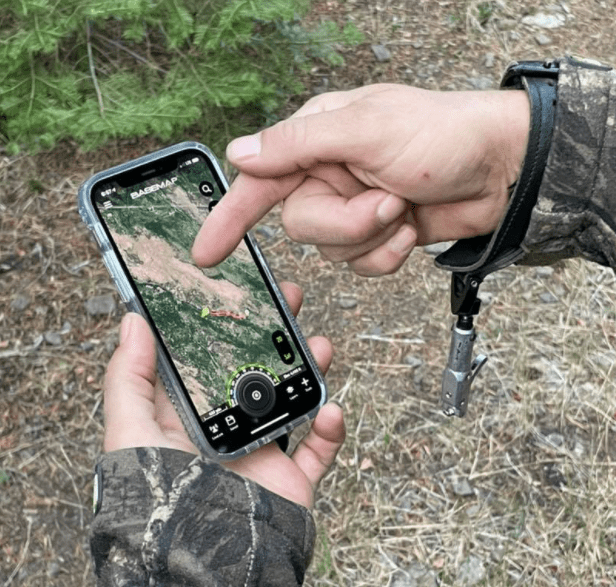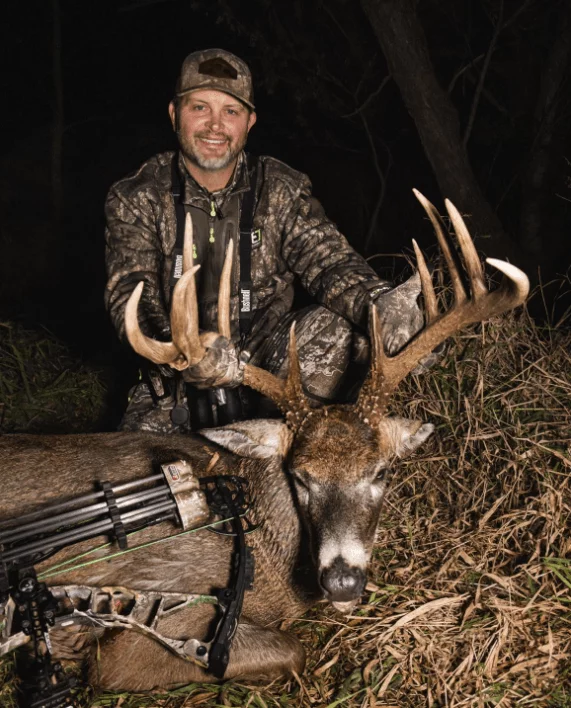Locating and Hunting Rut Funnels
There are great time periods to go deer hunting throughout the whole fall, but there’s probably no more anticipated time for hunters than the whitetail rut. Maybe it’s the excitement of watching bucks all fall, and suddenly seeing them get a bit more aggressive while chasing does. When a mature buck starts to throw caution to the wind a bit, it could be your time to capitalize on his lovesick attitude. So what are some ways you can hunt the whitetail rut effectively? Finding rut funnels is a great start. Here are a few ways you can locate some rut funnels for this fall, and how you can hunt them.
How to Find Rut Funnels
While most hunters are used to hunting funnels for whitetails, what exactly are rut funnels? Oftentimes, they are the same places you might think of when the term funnel comes to mind. Basically, anywhere the topography or vegetation pinches down to a smaller area (and thus constrains deer movement into a smaller area), you should have a higher chance of encountering a deer within shooting range. The nuance with this one is that it should funnel mature bucks past your stand. Does and bucks will both still travel between doe bedding areas and feeding areas during the rut. But during the rut, mature bucks seeking estrous does will focus more time on cruising between doe bedding areas, and will find the safest and most inconspicuous way to do that. That’s a classic rut funnel.
Aerial Maps for Scouting Rut Funnels
We’re very lucky today to have access to all the technology out there, and it exists on the phone in your pocket. With some simple satellite imagery, you can quickly locate a few key whitetail funnels that would work great for hunting season. But if you want to dig in a little deeper and find some true rut funnels, it helps to have a more specialized tool. We believe that special tool is a scouting app called BaseMap™.

This hunting app has all kinds of helpful features for identifying these funnels. First, you can use your phone or computer to quickly check out a few properties. The 3D map technology allows you to really visualize the lay of the land and get a good idea of how a deer might use it. Simply bring up your hunting area and look for some obvious feeding (e.g., agricultural fields, food plots, etc.) and bedding areas (e.g., dense fields, shrubby thickets, etc.). Drop in some trail lines you assume does would take to get between them, focusing on strips of trees, edges of swamps, or creek beds – things you can see on an aerial map. Then look for possible connections between the doe bedding areas or downwind side of feeding areas – this is where you’d expect to see a rutting buck on the chase.
Finding Rut Funnels on the Ground
Once you have a few spots in mind, it’s time to head to the field and ground-truth your suspicions. Start by locating the doe bedding areas – you should look for multiple beds all clustered together, with various sizes. If you can follow their trails, get on them to see where they lead. Some examples of a rut funnel might include a dense hedgerow or ditch/swale extending across an old field, or a ridge saddle near a food source and bedding area. Better yet, if you can find where two rut funnels come together and form a large X on the map, put up a stand immediately.
Keep in mind that if you’re scouting too far outside the peak rut phase, you might not find a lot of buck sign in rut funnels, as these are areas you’d expect them to use when really chasing does. During the early or late season, most bucks will be focused on bedding to food and back again. So don’t be discouraged when scouting if you don’t see sign. A good way to confirm that is to put up a cell camera, so you can get real-time info for when the bucks move in. Then you’ll know when you should start hunting that stand.
Using BaseMap on your phone, you can plot and save several features (i.e., SmartMarkers) as you scout, with a different symbol for deer sign, potential tree stand sites, or even trails. Each marker records weather conditions and you can even attach a photo to go along with the spot. When you get back home, you can see how all the observations match up and see if you need to tweak your position.
Hunting Rut Funnels
After you’ve found a few potential rut funnels, it’s time to get out and hunt them. Here are a few quick ways you can effectively hunt a rut stand.

- Position your stand downwind. This should be a no-brainer, but pay attention to which way the wind typically comes from. If you find a deer trail in your rut funnel, make sure your stand is at least 20 yards away on the downwind side, as bucks often skirt by on the downwind side of the trail as well to scent-check.
- Hunt all day. You never really know when a mature buck will stroll by when hunting the rut. But if your rut funnel is somewhere closer to or between doe bedding areas than feeding areas, you should have better luck in the late morning through early afternoon. With any luck, a hot doe will pull a nice buck right past your stand. So bring your lunch and plan on hunting all day.
- Try using calls. In the right areas that hold a couple mature deer, using deer calls or rattling antlers can be a good tactic because it makes a mature buck think he’s missing out on the action. The Challenger call by Bone Collector is a grunt tube and snort wheeze combination call, which you can use to challenge the old swamp buck you’re after. Likewise, add some rattling calls in, like the Bone Collector Bag-O-Bone, to really simulate bucks fighting over a hot doe.
- Use estrous scents. If bucks are on the move and really seeking does to breed, it might help to give them some incentive to stick around a little longer. When you head out to hunt in the morning, try putting a scent wick laced with Urge Whitetail Doe Full Estrous Attractant near the upwind side of the funnel. If a buck cruises through, he should get a nose full of estrous scent to keep him interested long enough for you to get a shot.
The bottom line is that if you can find a few potential rut funnels using BaseMap, get out into the woods and check them out. If it feels like it could be a good hunting spot, put up a camera and tree stand, and sneak back out until the action heats up and the rut’s in full swing. When the big buck pics start rolling in on your phone, you know it’s time to get in the tree.




